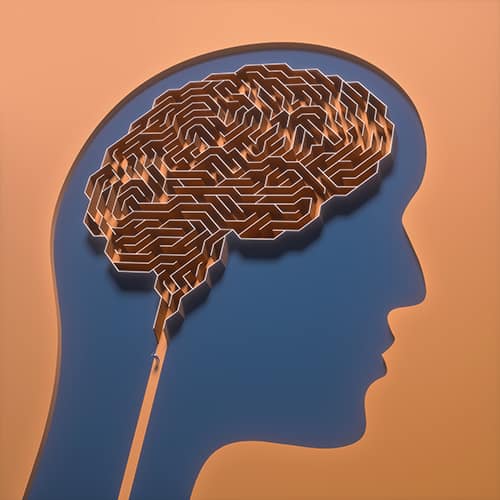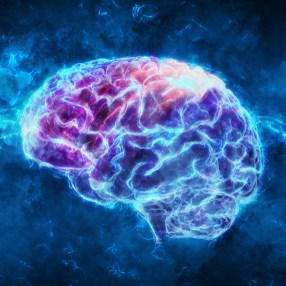This new feature that explores cognitive biases that can lead to errors in clinical decision-making and diagnosis.1 Such errors arise when clinicians, like all humans, take cognitive shortcuts that save time and energy, relying on intuition and past experience to make decisions rather than employing more time- and energy-intensive analytic thought processes.
CASE
Office Visit
A 51-year-old man presents to his primary care clinician with a complaint of lower back pain that started 2 weeks ago and has gotten progressively worse. He has difficulty ambulating and has been brought to the office by his mother, who is 75 years of age and must assist him in walking. He denies any recent trauma or falls; numbness, tingling, or loss of sensation or strength in the bilateral lower extremities; loss of bowel or bladder function; or saddle anesthesia. His history includes depression, anxiety, and substance-use disorder, including alcohol and heroin. Five years earlier, he underwent several surgeries following a work-related knee injury and was prescribed oxycodone to manage the pain following the surgery. He took more than the prescribed dose of oxycodone and, when he experienced continued pain and opioid withdrawal due to running out of prescribed opioids prior to time for refill, started using intravenous heroin. After a heroin overdose 6 months prior to the current visit, he completed a rehabilitation program and reports that he has not used opioids, heroin, or alcohol for the past 2 months. He smokes cigarettes at 1.5 packs-per-day and has a 40 pack-year history, is unemployed, and lives with his parents. His last visit to his primary care clinician was 1 year ago for a sinus infection, which was treated with a 1-week course of amoxicillin.
The patient’s vital signs are normal, and on physical exam he is alert and oriented but appears poorly conditioned, with a body mass index of 17.5. HEENT, neck, lungs, heart, abdomen, and skin evaluations are normal. He reports tenderness on palpation of the third lumbar spine vertebrae. On neurological exam, sensation and reflexes are normal; lower extremity strength is somewhat diminished but equal (4/5). He notes that the pain is unrelieved with rest and gets worse at night and when ambulating. He rates the pain as 10/10, and asks whether pain medication can be prescribed. Given the patient’s direct request for pain medication and history of substance use as well as the nonspecific exam findings, the clinician concludes that the patient is seeking opioids and that the pain is musculoskeletal in origin. She recommends NSAIDs and a gradual return to usual activities and provides the patient with a handout describing strengthening exercises for the abdomen and low back.
Emergency Department Visit
Two weeks later, the patient is brought to the emergency department by EMS with continued back pain as well as fever and chills. Temperature is 101.2 °F (38.4 °C); heart rate, 105 beats/min; and respiration rate, 17 breaths/min. The lumbar pain is now radiating to both legs, and he is unable to walk due to the pain. Laboratory testing reveals an elevated erythrocyte sedimentation rate and elevated C-reactive protein; white blood cell count is within normal limits. Magnetic resonance imaging with contrast of the spine reveals pyogenic spondylodiscitis. Blood cultures are positive for Staphylococcus aureus. The patient is started on intravenous antibiotics, and completes a 6-week course, with resolution of his pain and fever and return of inflammatory markers to normal limits.
DISCUSSION
In this case, the clinician diagnoses the patient with musculoskeletal back pain, even though there are clues that should have prompted a fuller evaluation, including the patient’s history of intravenous drug use (which is a risk factor for spinal osteomyelitis), his characterization of the pain as worsening at night and not improving with rest, and the absence of trauma or precipitating event.1 Instead, the clinician, focusing on the patient’s history of substance abuse, request for pain medication, and description of the pain as 10/10 (all flags for drug-seeking behavior)2, decided that the patient was seeking drugs and did not pursue further evaluation with blood work or imaging.
The cognitive bias affecting this clinical encounter is attribution error, which is broadly defined as a cognitive tendency that can lead an individual to incorrectly assign meaning to other persons’ actions. In a clinical setting, attribution error can occur when the clinician allows social, personal, or other characteristics (often negative stereotypes) of the patient to overly influence their thinking while underestimating the influence of situational factors. In this case, the clinician mistakenly attributed the patient’s request for pain medication to his addiction rather than to his desire for relief from his back pain. While the clinician in this case was not going to diagnose the spinal infection during this visit and showed appropriate concern for the patient’s substance use issues, her error was in giving more weight to that history and prematurely ending her decision-making processes and concluding the evaluation.
Strategies for avoiding attribution error, and other cognitive biases, have been proposed and studied.3 Among these are metacognition, which involves stepping back from the scenario and reflecting on the thinking process, and cognitive forcing, where the clinician becomes familiar with cognitive errors and develops specific strategies to overcome them. Both strategies involve consciously thinking about thinking and pausing to reflect on the elements and information from the clinical encounter at hand.






